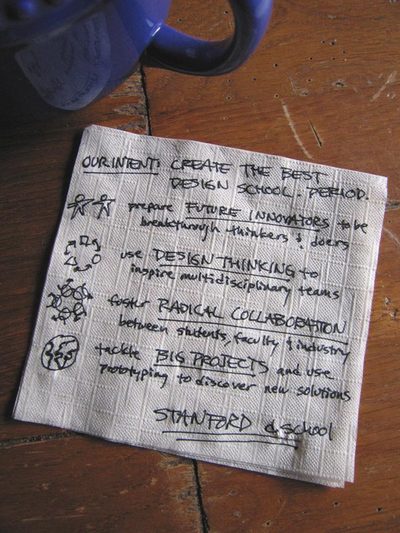I just caught the premier episode of The Rebel Billionaire, Sir Richard Branson’s answer to Donald Trump. I had three takeaways from the show, two trivial, one deep.
First, the trivial:
- If you want to get on a reality TV show, you must dye your hair blonde, or for bonus points, burn it extra crispy white.
- And/or: do something strange with that hair. Shave it. Grow a jazz dot. Stick it up with glue. If all else fails, dump a dorky hat over it.
Perhaps this is Branson’s way of poking fun at Trump – “Look mate, I can gather a load of people with hair at least as silly as yours.” However, as with the extreme sports activities which make up the bulk of the show, hair has very little to do with business acumen or success. As I said, these are trivial points.
Assholes, on the other hand, are not (for those of you not paying attention, this is the “deep” takeaway). Organizational behavior expert Robert Sutton has written extensively on the effect that assholes have on coworkers. We’ve all been there: you’re sitting in a staff meeting, trying to act like an adult, and then someone in the room has a hissy fit. Or think about the low-level teasing that inevitably accompanies someone wearing what they want to wear to work. And then there are the folks who, plainly put, treat people below them (such as janitors and exec assistants) like shit. All the work of assholes, and all bad news; as Sutton points out, “…there is substantial evidence that anger and hostility are contagious, so if I am nasty to someone, they will be nasty to me, and a destructive cycle will commence.” Sound familiar?
What if you could have an asshole-free workplace? I worked in one such place, and it was the best four years of my professional career. Sure, we had a few total jerk-offs here and there, but in general our hiring process was all about establishing a shock-proof, bullet-resistant asshole detector, and it worked. Here’s how:
- We generally only accepted interviews from candidates referred via word of mouth. In Seth Godin speak, we looked for Purple Cows. Resumes were a bad thing… piles of references were golden!
- We phone screened for technical competence before you walked in the door. It’s one thing to be an asshole, it’s quite another to be an incompetent asshole, or even worse, an incompetent nice person.
- Once in the door, you spoke to at least 12 people. You had lunch with them. You walked around. You talked. You answered questions.
- Any hire candidate got interviewed by people in the org who would be above, below, or to the side of them, status-wise. And by people in totally unrelated disciplines. That way, if you did get hired, you felt that the entire company wanted you, not just one specific high-status manager, who by the way, might or might not be a total asshole herself. This method also keeps assholes in a hiring position from replicating. Assholes tend to stick together, and once stuck are not easily separated.
- We took you to lunch. Decisions you made at the restaurant mattered. A lot.
I know this isn’t the norm out in industry. Not many HR professionals are ready to cede so much power over the hiring process to the rest of the organization. This is too bad. As Sutton writes:
For starters, I am surprised by how few senior managers act to avoid hiring jerks in the first place, or to stop abusive employees in their tracks once they reveal their true colors. The key is to make explicit to everyone involved in hiring decisions that candidates who have strong skills but who show signs they will belittle and disrespect others, cannot be hired under any circumstances.
Sir Branson took an innovative approach to the asshole problem by donning Scooby-Doo-ish makeup and mask before picking up would-be contestants from the airport in a London taxi cab. Disguised as an arthritic old cabbie, Branson was able to observe these would-be Trumps interacting with a “little” person, a situation which is to an asshole what buried truffles are to a pig – an invitation to root around and generally make a boor of one’s self. Not surprisingly, three contestants showed their true colors in short order, and Branson kicked two of them off. A strong cultural statement, eh?
On Branson’s show, the jerks – wait, by willingly going on a reality TV show they’re all grade-A assholes, right? – okay, the really, really big jerks get kicked off first. But that doesn’t happen in real life workplaces, at least not quickly enough to matter in most situations. What to do? Sutton advises that there “… are times when the answer is indifference, when the wisest course is to go through the motions, learn not to care, and just get through the day until something changes on your job, or something better comes along… I am starting to believe that, as a management professor, part of my job is to teach people when indifference is more useful than passion.” I tend to agree with him.

